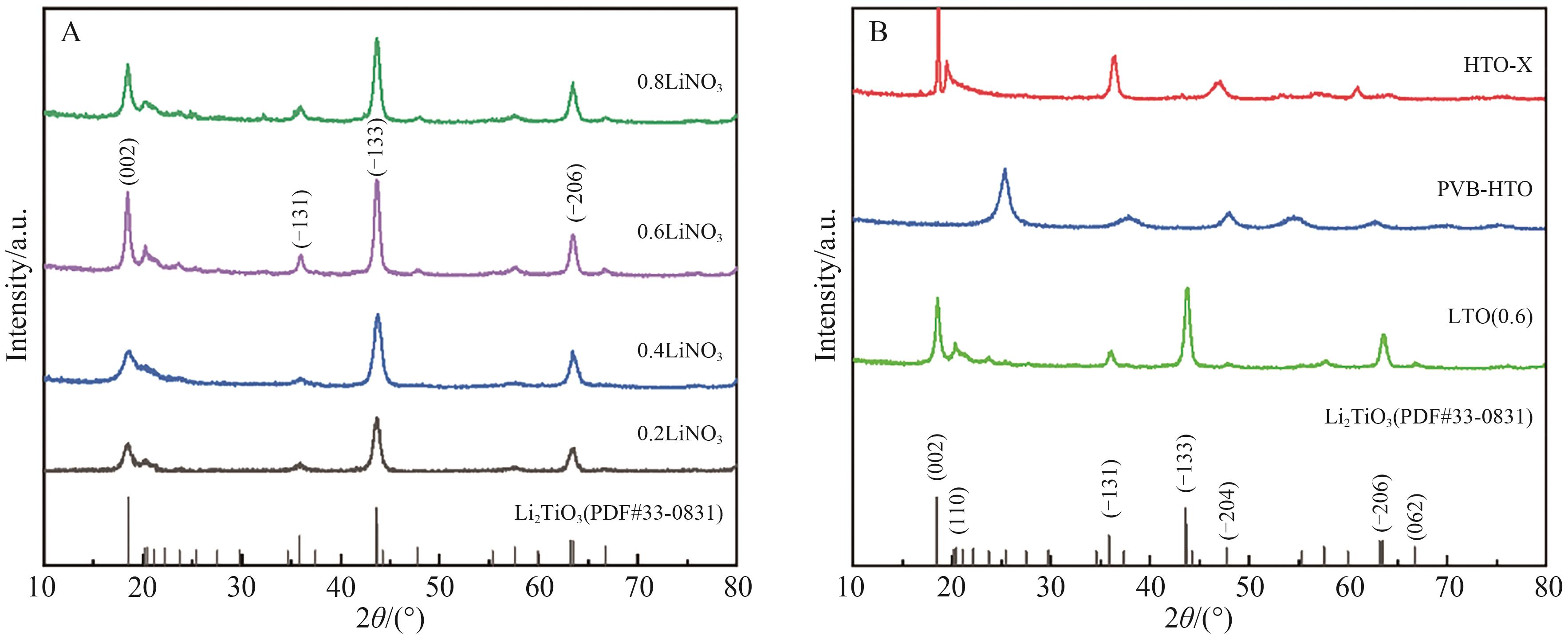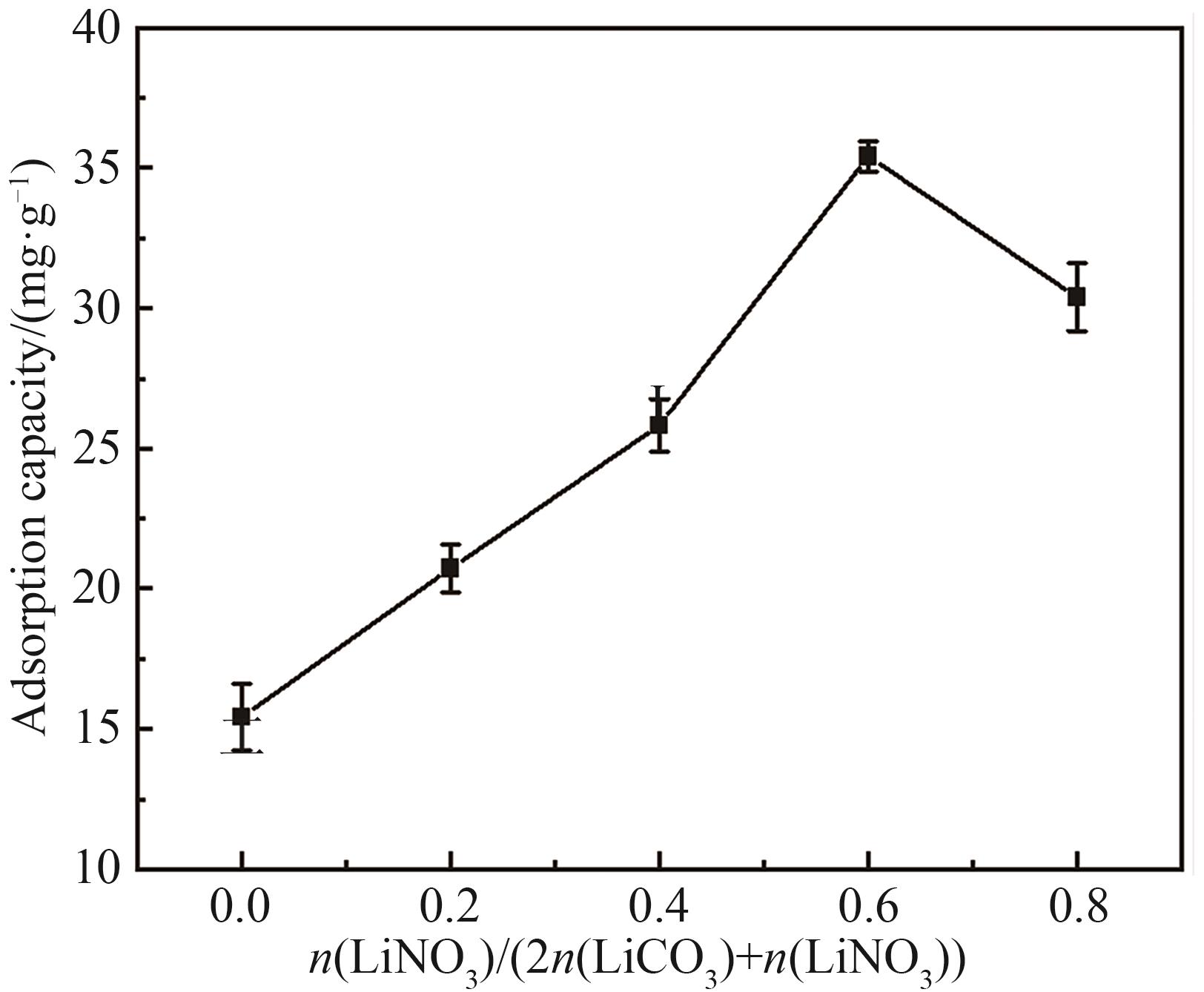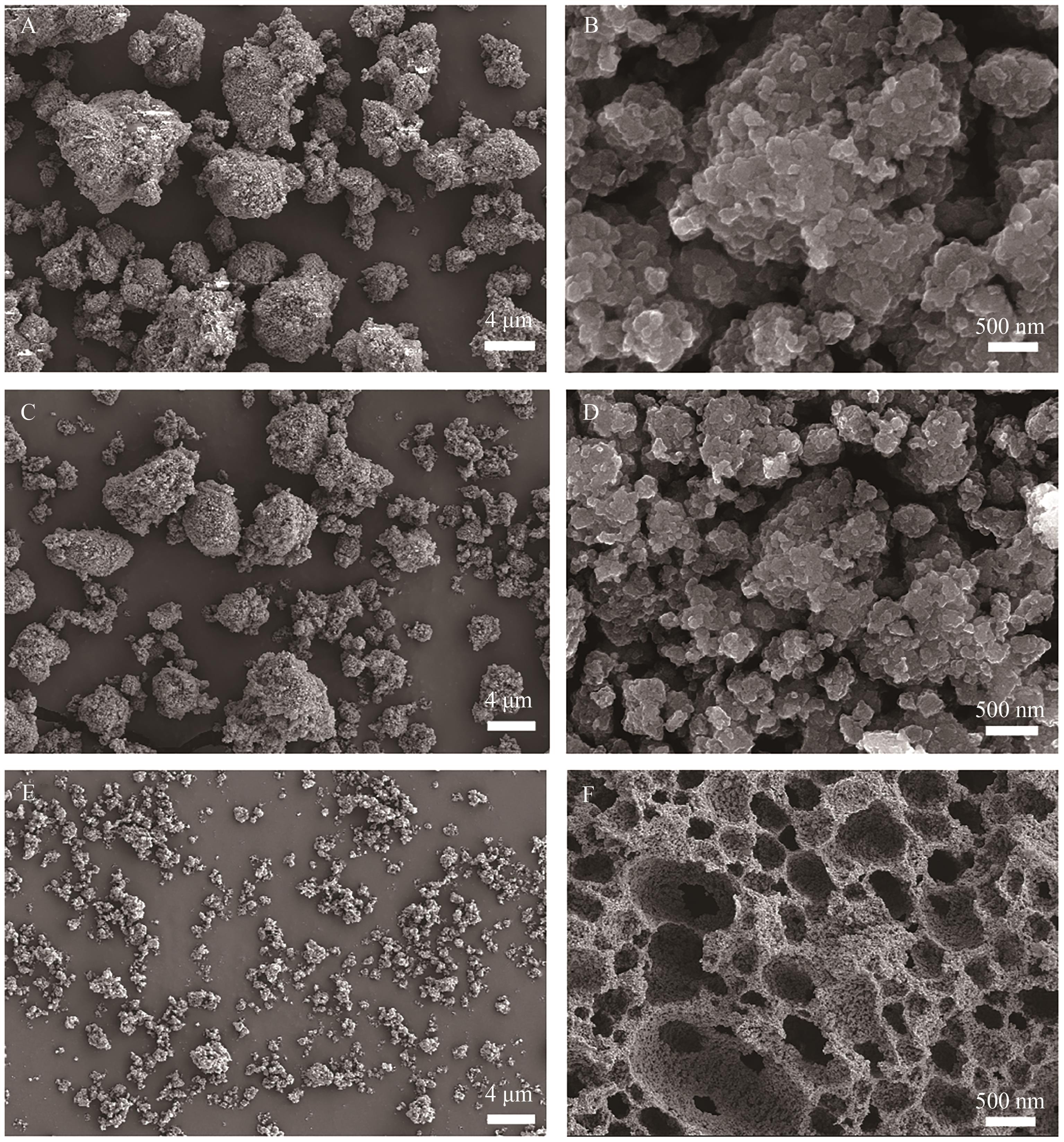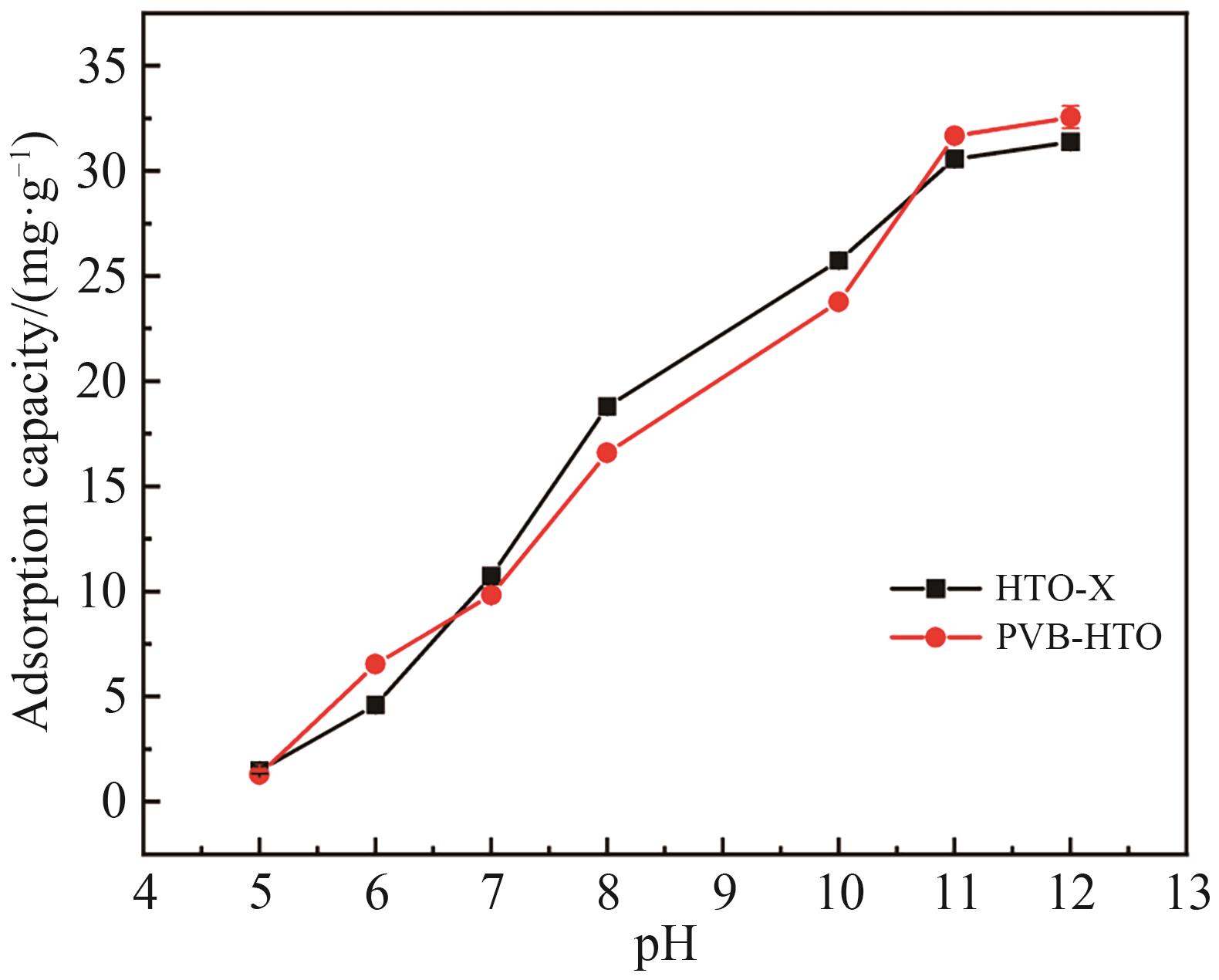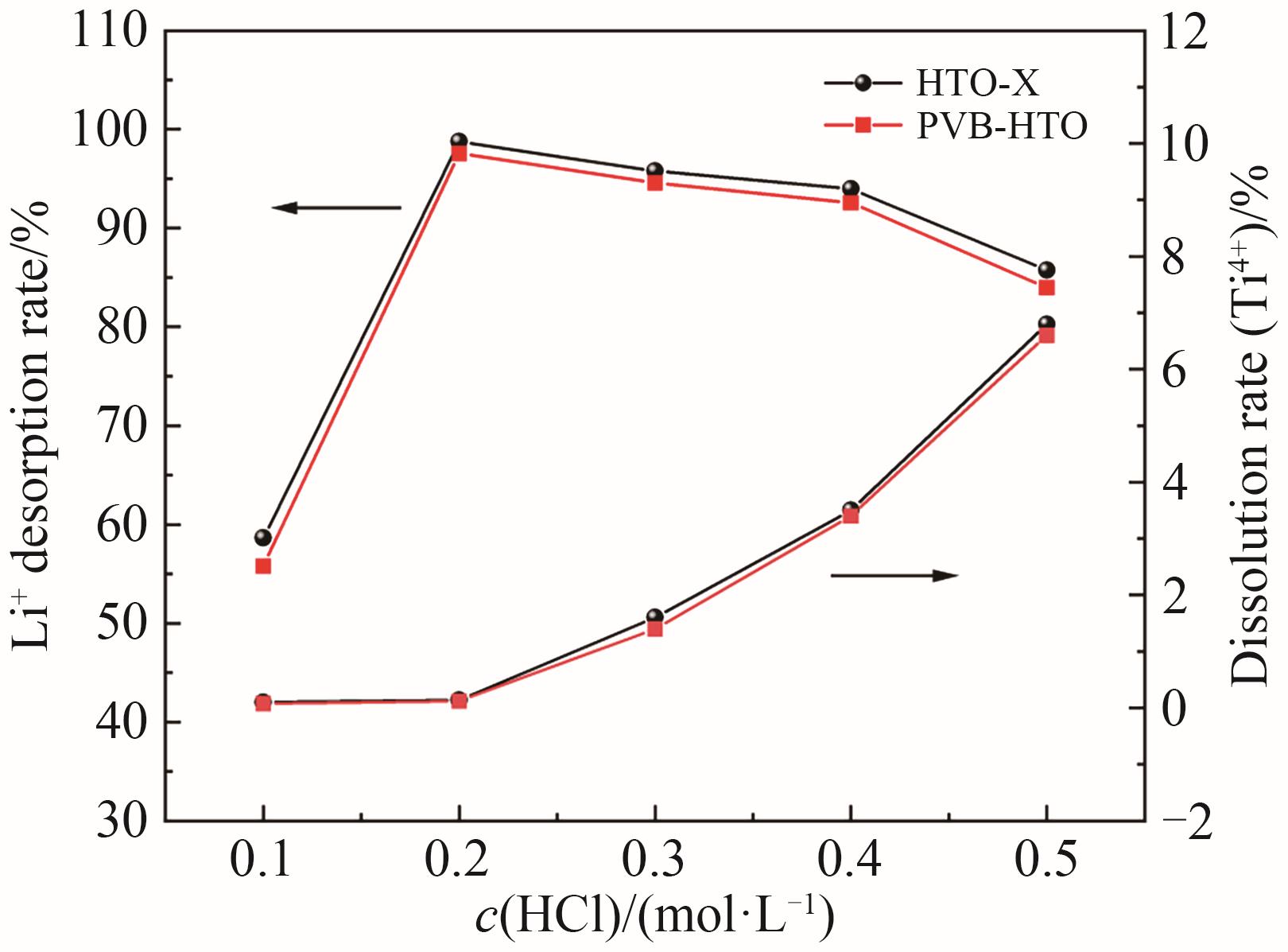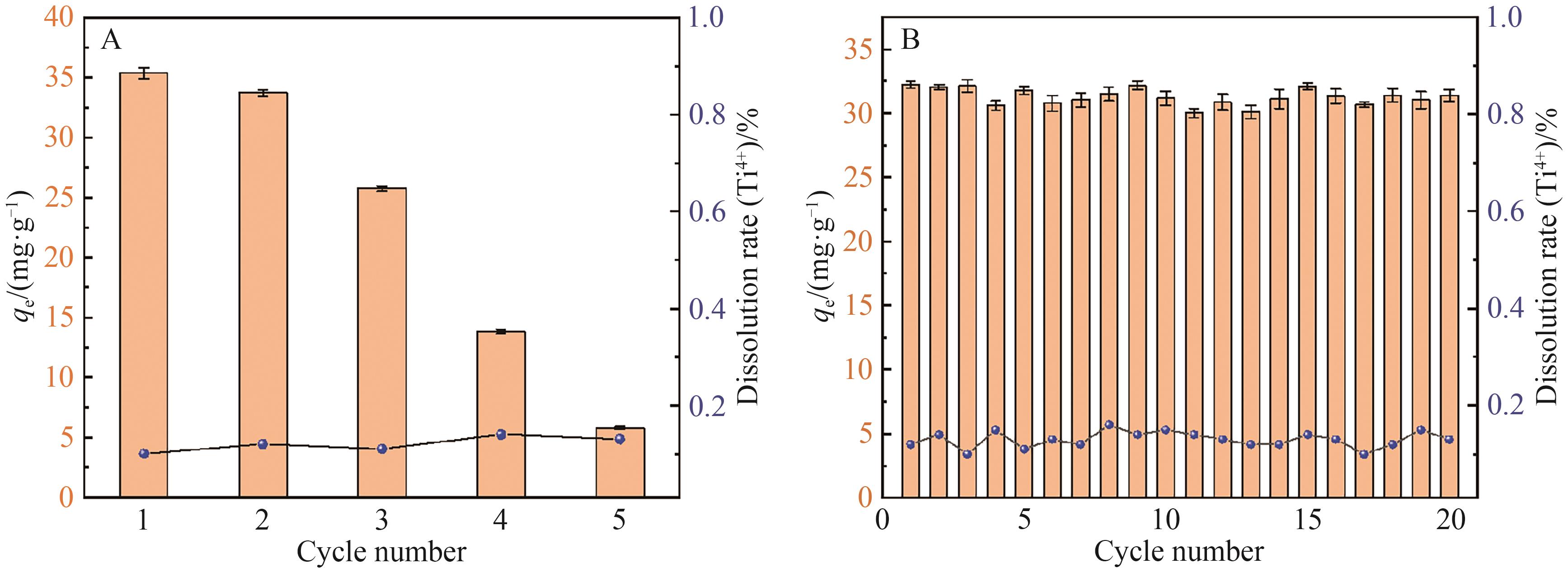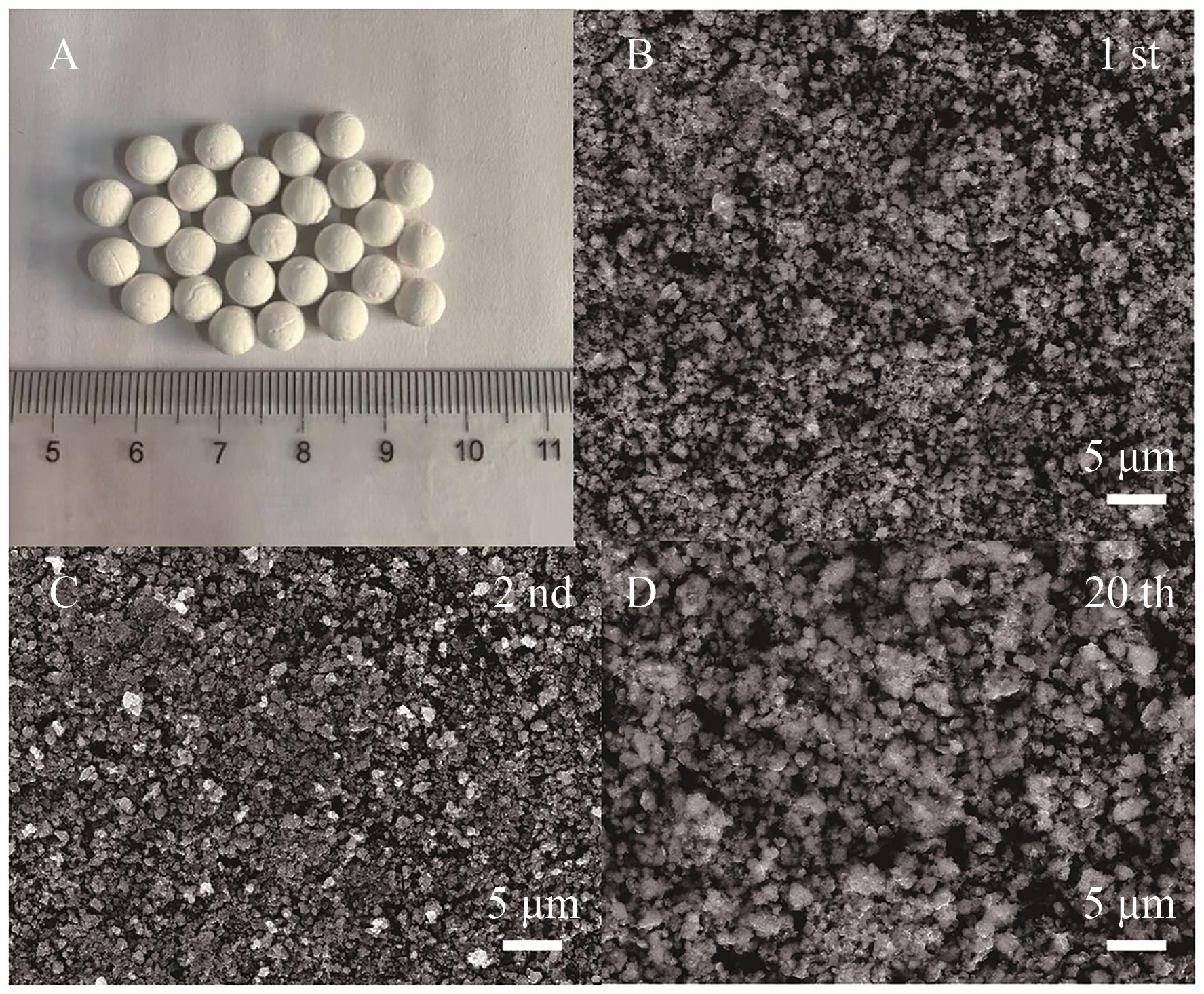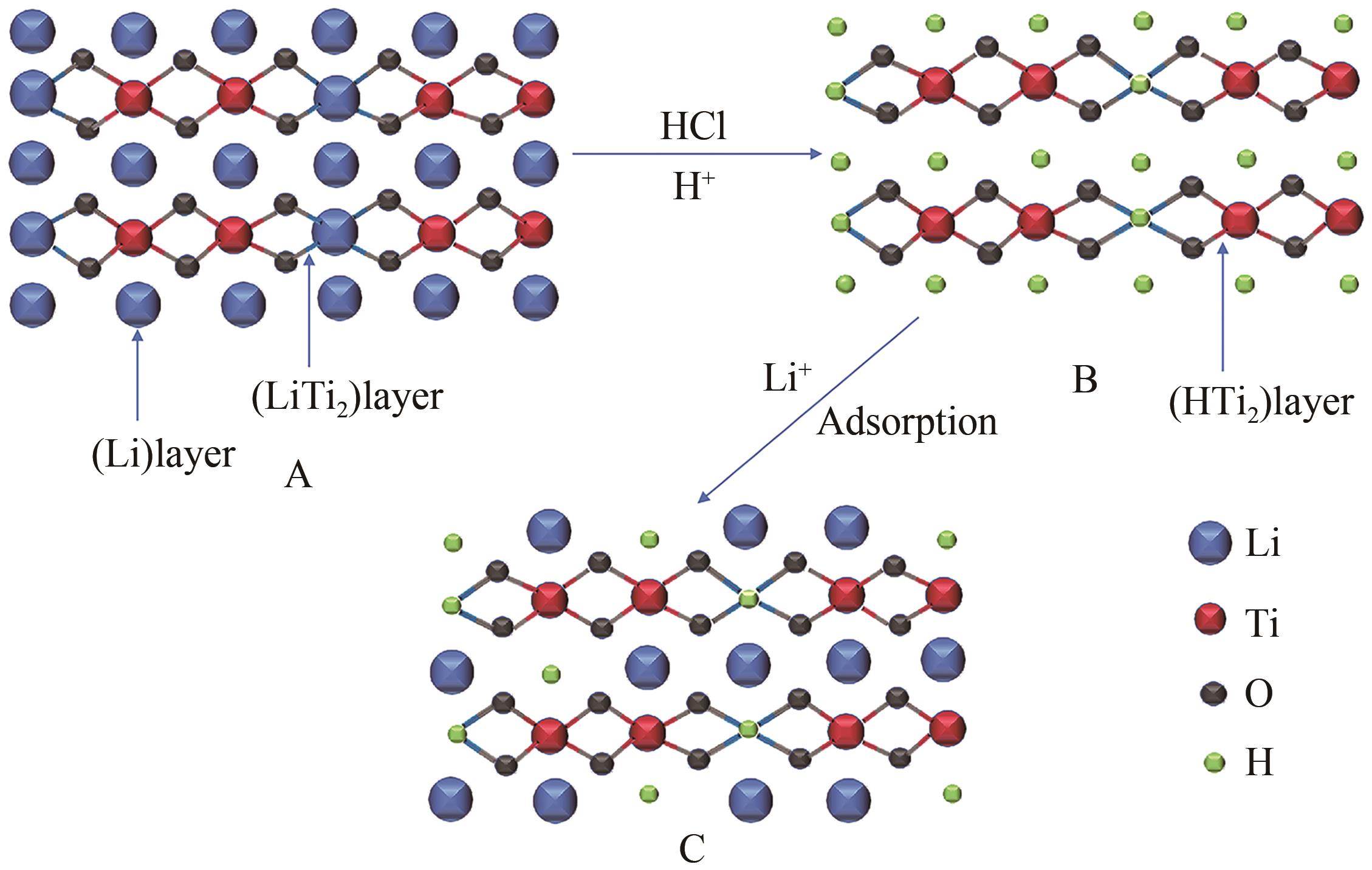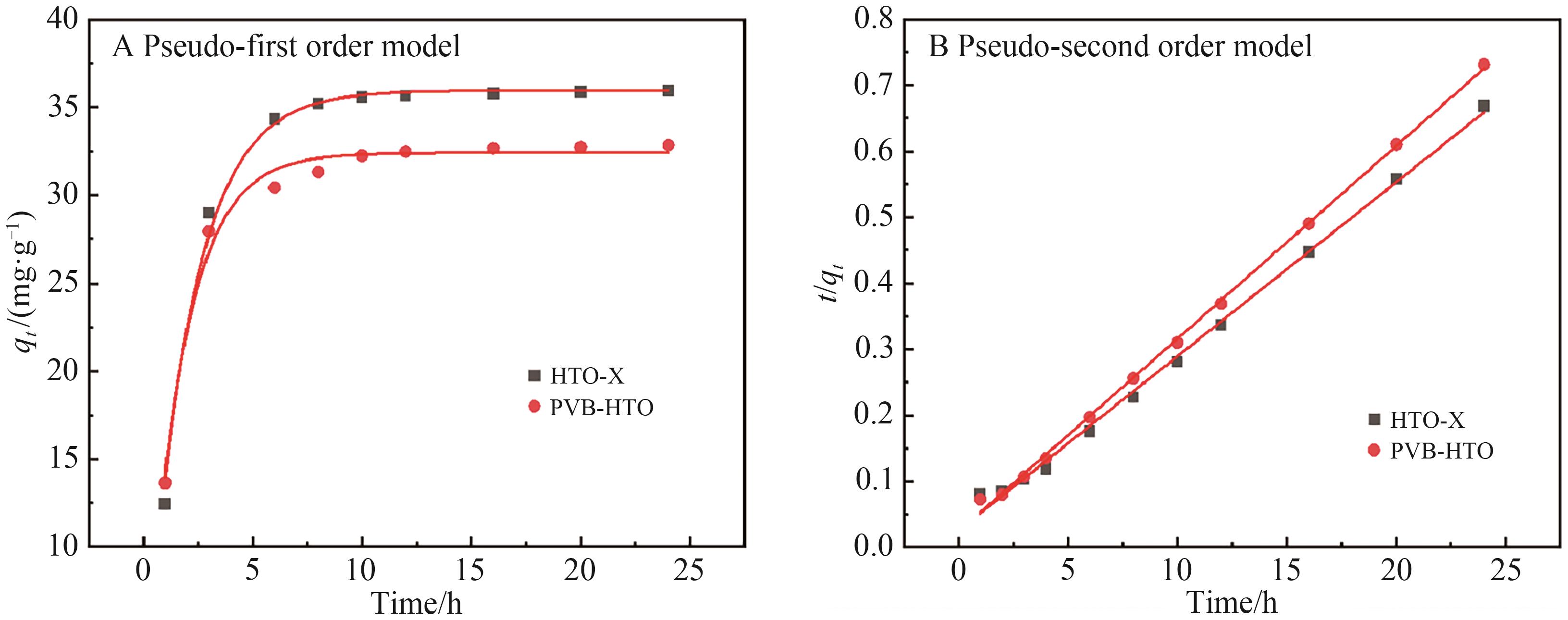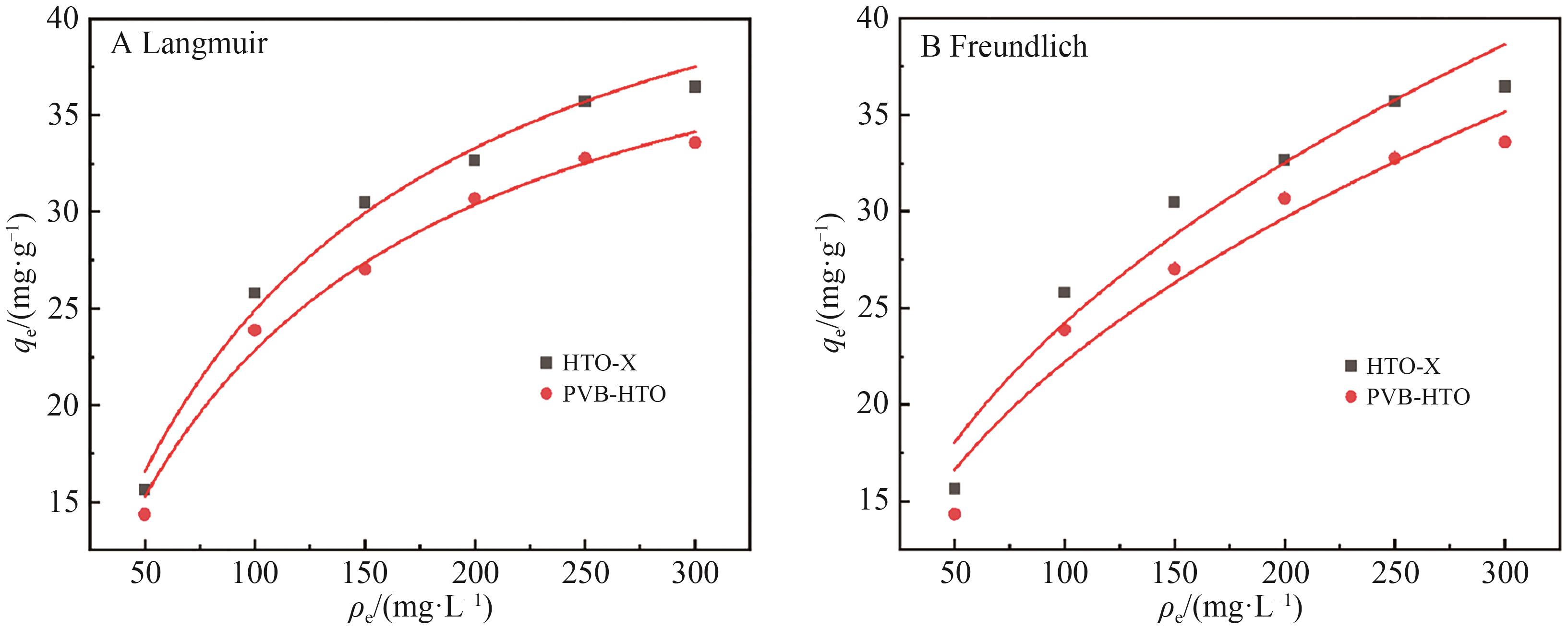
应用化学 ›› 2025, Vol. 42 ›› Issue (4): 552-564.DOI: 10.19894/j.issn.1000-0518.240309
颗粒型钛基锂离子筛的制备及锂吸附性能
王珍珠1, 何争光1( ), 和兵2, 梁柯1, 白亦薇1, 贾宇鑫1
), 和兵2, 梁柯1, 白亦薇1, 贾宇鑫1
- 1.郑州大学生态与环境学院,郑州 450001
2.河南省郑州生态环境监测中心,郑州 450046
-
收稿日期:2024-09-29接受日期:2025-03-21出版日期:2025-04-01发布日期:2025-05-14 -
通讯作者:何争光 -
作者简介:13838172129@163.com
-
基金资助:国家“十三五”科技重大专项水专项项目(2017ZX07602-001-002)
Preparation and Lithium Adsorption Performance of Particulate Titanium-Based Lithium Ion Sieve
Zhen-Zhu WANG1, Zheng-Guang HE1( ), Bing HE2, Ke LIANG1, Yi-Wei BAI1, Yu-Xin JIA1
), Bing HE2, Ke LIANG1, Yi-Wei BAI1, Yu-Xin JIA1
- 1.College of Ecology and Environment,Zhengzhou University,Zhengzhou 450001,China
2.Henan Province Zhengzhou Ecological Environment Monitoring Center,Zhengzhou 450046,China
-
Received:2024-09-29Accepted:2025-03-21Published:2025-04-01Online:2025-05-14 -
Contact:Zheng-Guang HE -
Supported by:the National Science and Technology Major Special Project for Water-related Issues of the 13th Five-Year Plan(2017ZX07602-001-002)
摘要:
钛基锂离子筛具有较强的Ti—O键使其具有结构稳定、耐酸碱性能好等优点,经常被用作盐湖提锂的吸附材料,但传统单一锂源合成的粉末锂离子筛存在吸附容量低、吸附速率低和循环性能差等问题。 采用Li2CO3和LiNO3作为混合锂源,与纳米TiO2通过高温固相法合成改性锂离子筛前驱体(LTO),酸洗后得到硝酸锂改性的粉末钛基锂离子筛(HTO-X),在HTO-X基础上又进行成型研究,合成了颗粒型钛基锂离子筛(PVB-HTO)。采用X射线衍射(XRD)、扫描电子显微镜(SEM)和N2吸附-脱附等方法表征,探究了PVB-HTO的晶体结构、微观形貌和吸附机理,通过锂离子吸附实验,对其吸附和再生性能进行了研究。 结果表明: HTO-X具有更大的比表面积和孔体积,更高的吸附容量和更大的吸附速率,吸附过程为单分子层化学吸附; 使用0.2 mol/L盐酸酸洗后得到的改性HTO-X的Li+平衡吸附容量为35.82 mg/g,吸附速率较未改性前提高了75%,PVB-HTO的Li+平衡吸附容量为32.32 mg/g,经过20次循环后Li+吸附率仍保持在92%以上,钛的溶损率在0.15%以下。 改性后的锂离子筛(HTO-X和PVB-HTO)在锂离子吸附容量、吸附速率和循环性能方面均表现出显著优势,尤其是在卤水锂回收领域具有很大的应用潜力。
中图分类号:
引用本文
王珍珠, 何争光, 和兵, 梁柯, 白亦薇, 贾宇鑫. 颗粒型钛基锂离子筛的制备及锂吸附性能[J]. 应用化学, 2025, 42(4): 552-564.
Zhen-Zhu WANG, Zheng-Guang HE, Bing HE, Ke LIANG, Yi-Wei BAI, Yu-Xin JIA. Preparation and Lithium Adsorption Performance of Particulate Titanium-Based Lithium Ion Sieve[J]. Chinese Journal of Applied Chemistry, 2025, 42(4): 552-564.
| Ion | Li+ | Na+ | K+ | Ca2+ | Mg2+ | Cl- | SO | CO |
|---|---|---|---|---|---|---|---|---|
| ρ/(mg·L-1) | 150 | 116 500 | 3 780 | 435 | 5 700 | 187 000 | 18 000 | 230 |
表1 模拟东台吉乃尔盐湖卤水各离子浓度
Table 1 The concentration of ions in the brine of Dongtai Genel Salt Lake
| Ion | Li+ | Na+ | K+ | Ca2+ | Mg2+ | Cl- | SO | CO |
|---|---|---|---|---|---|---|---|---|
| ρ/(mg·L-1) | 150 | 116 500 | 3 780 | 435 | 5 700 | 187 000 | 18 000 | 230 |
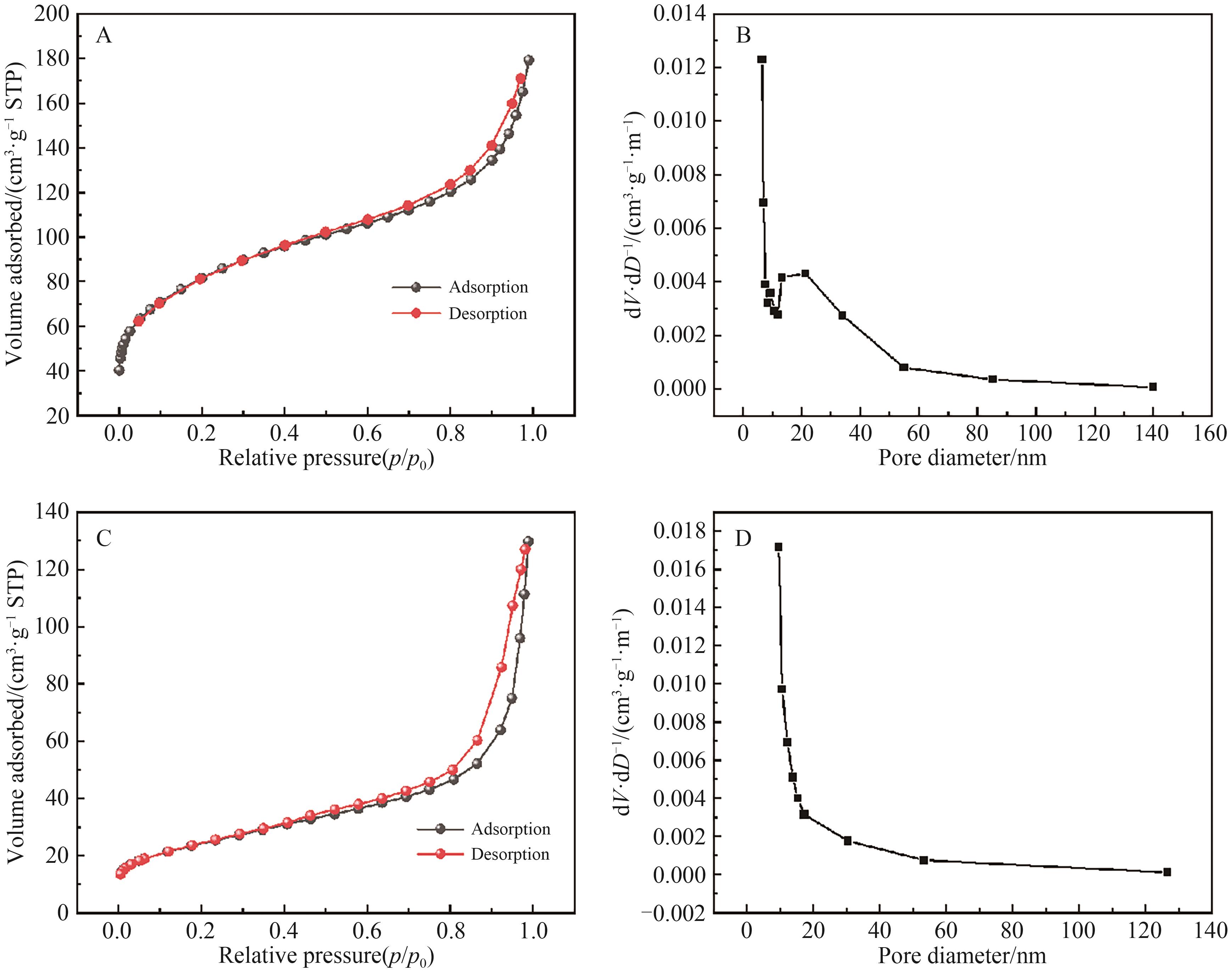
图4 HTO-X(A、B)和PVB-HTO(C、D)的N2吸附脱附等温线和孔径分布图
Fig.4 The N2 adsorption-desorption isotherms and pore size distribution diagrams of HTO-X (A, B) and PVB-HTO (C, B)
| Kd/(mL·g-1)-HTO-X | |||||
| Kd/(mL·g-1)-PVB-HTO | |||||
表2 2种锂离子筛模拟盐湖卤水中的选择性参数
Table 2 Two lithium ion sieves simulate selective parameters in salt lake brine
| Kd/(mL·g-1)-HTO-X | |||||
| Kd/(mL·g-1)-PVB-HTO | |||||
| Pseudo-first order model | Pseudo-second order model | |||||
|---|---|---|---|---|---|---|
| k1/h-1 | qe1/(mg·g-1) | R2 | k2/(g·mg-1·h-1) | qe2/(mg·g-1) | R2 | |
| HTO-X | 0.194 6 | 34.67 | 0.985 8 | 0.234 9 | 35.94 | 0.996 3 |
| PVB-HTO | 0.168 1 | 31.43 | 0.990 3 | 0.216 2 | 32.48 | 0.998 7 |
表3 2种锂离子筛的吸附动力学参数
Table 3 Adsorption kinetic parameters of two kinds of lithium ion sieves
| Pseudo-first order model | Pseudo-second order model | |||||
|---|---|---|---|---|---|---|
| k1/h-1 | qe1/(mg·g-1) | R2 | k2/(g·mg-1·h-1) | qe2/(mg·g-1) | R2 | |
| HTO-X | 0.194 6 | 34.67 | 0.985 8 | 0.234 9 | 35.94 | 0.996 3 |
| PVB-HTO | 0.168 1 | 31.43 | 0.990 3 | 0.216 2 | 32.48 | 0.998 7 |
| Langmuir model | Freundlich model | |||||
|---|---|---|---|---|---|---|
| kN/(L·mg-1) | qm/(mg·g-1) | R2 | kL/(L·mg-1) | n | R2 | |
| HTO-X | 0.009 8 | 50.22 | 0.990 5 | 3.415 2 | 2.350 7 | 0.950 2 |
| PVB-HTO | 0.010 1 | 45.36 | 0.988 0 | 3.238 0 | 2.391 8 | 0.942 2 |
表4 2种锂离子筛的吸附等温线拟合参数
Table 4 Adsorption isotherm fitting parameters of two kinds of lithium ion sieves
| Langmuir model | Freundlich model | |||||
|---|---|---|---|---|---|---|
| kN/(L·mg-1) | qm/(mg·g-1) | R2 | kL/(L·mg-1) | n | R2 | |
| HTO-X | 0.009 8 | 50.22 | 0.990 5 | 3.415 2 | 2.350 7 | 0.950 2 |
| PVB-HTO | 0.010 1 | 45.36 | 0.988 0 | 3.238 0 | 2.391 8 | 0.942 2 |
| Ion-sieve | Material synthesis method | Li+ uptake/(mg·g-1) | Adsorption time/h | Cycle number | Ref. |
|---|---|---|---|---|---|
| HTO | Solid phase reaction Li2CO3+TiO2 | 29 | 24 | / | [ |
| HTO | Solid phase reaction C2H3LiO2·2H2O+TiO2 | 24.5 | 12 | 5 | [ |
| HTO | Solid phase reaction LiOH·H2O+TiO2 | 27.8 | 24 | 5 | [ |
| HTO | Sol-gel CH3COOLi +Ti(OC4H9)4 | 24.6 | 22 | / | [ |
| HTO-X | Solid phase reaction Li2CO3+LiNO3+TiO2 | 35.82 | 6 | 5 | This work |
| HAS | Solid phase reaction Li2CO3+Al(OH)3+SiO2 | 26.28 | 8 | 10 | [ |
| HTO | Hydrothermal synthesis TTIP+LiOH+H2O2 | 26.85 | 9 | 5 | [ |
| PVA-HTO | Solid phase reaction Li2CO3+TiO2 | 13.54 | 12 | 5 | [ |
| PVC-HTO | Solid phase reaction Li2CO3+TiO2 | 9 | 12 | 5 | [ |
| PVC-LMZO | Solid phase reaction Li1.6Mn1.6O4+Zr(NO3)4·5H2O | 18.33 | 6 | 15 | [ |
| HTO-P | Solid phase reaction Li2CO3+TiO2 | 14.25 | 15 | 5 | [ |
| ATP-HTO | Solid phase reaction Li2CO3+ATP | 29.18 | 10 | 5 | [ |
| PVB-HTO | Solid phase reaction Li2CO3+LiNO3+TiO2 | 32.32 | 6 | 20 | This work |
表5 本研究材料与其他材料吸附效果的比较
Table 5 Comparison of adsorption effect between the studied material and other materials
| Ion-sieve | Material synthesis method | Li+ uptake/(mg·g-1) | Adsorption time/h | Cycle number | Ref. |
|---|---|---|---|---|---|
| HTO | Solid phase reaction Li2CO3+TiO2 | 29 | 24 | / | [ |
| HTO | Solid phase reaction C2H3LiO2·2H2O+TiO2 | 24.5 | 12 | 5 | [ |
| HTO | Solid phase reaction LiOH·H2O+TiO2 | 27.8 | 24 | 5 | [ |
| HTO | Sol-gel CH3COOLi +Ti(OC4H9)4 | 24.6 | 22 | / | [ |
| HTO-X | Solid phase reaction Li2CO3+LiNO3+TiO2 | 35.82 | 6 | 5 | This work |
| HAS | Solid phase reaction Li2CO3+Al(OH)3+SiO2 | 26.28 | 8 | 10 | [ |
| HTO | Hydrothermal synthesis TTIP+LiOH+H2O2 | 26.85 | 9 | 5 | [ |
| PVA-HTO | Solid phase reaction Li2CO3+TiO2 | 13.54 | 12 | 5 | [ |
| PVC-HTO | Solid phase reaction Li2CO3+TiO2 | 9 | 12 | 5 | [ |
| PVC-LMZO | Solid phase reaction Li1.6Mn1.6O4+Zr(NO3)4·5H2O | 18.33 | 6 | 15 | [ |
| HTO-P | Solid phase reaction Li2CO3+TiO2 | 14.25 | 15 | 5 | [ |
| ATP-HTO | Solid phase reaction Li2CO3+ATP | 29.18 | 10 | 5 | [ |
| PVB-HTO | Solid phase reaction Li2CO3+LiNO3+TiO2 | 32.32 | 6 | 20 | This work |
| 1 | KIM J, KIM H, KANG K. Conversion‐based cathode materials for rechargeable sodium batteries[J]. Adv Energy Mater, 2018, 8(17): 1702646-1702665. |
| 2 | 余亮良, 黄敏. 含锂资源提锂技术现状及研究进展[J]. 有色冶金设计与研究, 2024, 45(2): 5-9, 24. |
| YU L L, HUANG M. Current status and research progress of lithium resource extraction technology[J], Nonfer Met Design Res, 2024, 45(2): 5-9, 24. | |
| 3 | LIU D, GAO X, AN H, et al. Supply and demand response trends of lithium resources driven by the demand of emerging renewable energy technologies in China[J]. Resources, Conservation Recycl, 2019, 145: 311-321. |
| 4 | SRIVASTAVA V, RANTALA V, MEHDIPOUR P, et al. A comprehensive review of the reclamation of resources from spent lithium-ion batteries[J]. Chem Eng J, 2023, 474: 145822-145840. |
| 5 | 葛涛, 徐亮, 孟金伟, 等. 盐湖卤水提锂工艺技术研究进展[J]. 有色金属工程, 2021, 11(2): 55-62. |
| GE T, XU L, MENG J W, et al. Research progress on lithium extraction technology from salt lake brine[J]. Nonfer Met Eng, 2021, 11(2): 55-62. | |
| 6 | WANG S, ZHANG M, ZHANG Y, et al. Application of citric acid as eluting medium for titanium type lithium ion sieve[J]. Hydrometallurgy, 2019, 183: 166-174. |
| 7 | LI X, CHEN L, CHAO Y, et al. Amorphous TiO2-derived large-capacity lithium ion sieve for lithium recovery[J]. Chem Eng Technol, 2020, 43(9): 1784-1791. |
| 8 | WANG S, ZHANG M, ZHANG Y, et al. High adsorption performance of the Mo-doped titanium oxide sieve for lithium ions[J]. Hydrometallurgy, 2019, 187: 30-37. |
| 9 | ZHANG L, ZHOU D, YAO Q, et al. Preparation of H2TiO3-lithium adsorbent by the sol-gel process and its adsorption performance[J]. Appl Surf Sci, 2016, 368: 82-87. |
| 10 | ZHANG L Y, LIU Y W, HUANG L, et al. A novel study on preparation of H2TiO3-lithium adsorbent with titanyl sulfate as titanium source by inorganic precipitation-peptization method[J]. RSC Adv, 2018, 8(3): 1385-1391. |
| 11 | TANG D, ZHOU D, ZHOU J, et al. Preparation of H2TiO3-lithium adsorbent using low-grade titanium slag[J]. Hydrometallurgy, 2015, 157: 90-96. |
| 12 | GU D, SUN W, HAN G, et al. Lithium ion sieve synthesized via an improved solid state method and adsorption performance for West Taijinar Salt Lake brine[J]. Chem Eng J, 2018, 350: 474-483. |
| 13 | LIN H, YU X, LI M, et al. Synthesis of polyporous ion-sieve and its application for selective recovery of lithium from geothermal water[J]. ACS Appl Mater Interfaces, 2019, 11(29): 26364-26372. |
| 14 | ZHAO B, QIAN Z, GUO M, et al. The performance and mechanism of recovering lithium on H4Ti5O12 adsorbents influenced by (110) and (111) facets exposed[J]. Chem Eng J, 2021, 414: 128729-128741. |
| 15 | CHEN S, CHEN Z, WEI Z, et al. Titanium-based ion sieve with enhanced post-separation ability for high performance lithium recovery from geothermal water[J]. Chem Eng J, 2021, 410: 128320-128329. |
| 16 | LIMJUCO L A, NISOLA G M, LAWAGON C P, et al. H2TiO3 composite adsorbent foam for efficient and continuous recovery of Li+ from liquid resources[J]. Colloids Surf A, 2016, 504: 267-279. |
| 17 | 郭佳明, 刘明言, 吴强, 等. 硝酸锂改性钛系离子筛的制备及其吸附性能[J]. 化工学报, 2020, 71(2): 879-888. |
| GUO J M, LIU M Y, WU Q, et al. Preparation and adsorption performance of lithium nitrate modified titanium-based ion sieve[J]. J Chem Ind Eng, 2020, 71(2): 879-888. | |
| 18 | JANG Y, CHUNG E. Adsorption of lithium from shale gas produced water using titanium based adsorbent[J]. Ind Eng Chem Res, 2018, 57(25): 8381-8387. |
| 19 | MARCUS Y. Theromdynamics of solavtion of ions. part 5. gibbs free-energy of hydration at 298.15 K[J]. J Chem Soc, Faraday Trans, 1991, 87(18): 2995-2999. |
| 20 | HE G, ZHANG L, ZHOU D, et al. The optimal condition for H2TiO3 lithium adsorbent preparation and Li+ adsorption confirmed by an orthogonal test design[J]. Ionics, 2015, 21(8): 2219-2226. |
| 21 | HOSOGI Y, KATO H, KUDO A. Visible light response of AgLi1/3M2/3O2(M=Ti and Sn) synthesized from layered Li2MO3 using molten AgNO3[J]. J Mater Chem, 2008, 18(6): 647-653. |
| 22 | JI Z Y, YANG F J, ZHAO Y Y, et al. Preparation of titanium-base lithium ionic sieve with sodium persulfate as eluent and its performance[J]. Chem Eng J, 2017, 328: 768-775. |
| 23 | CHITRAKAR R, MAKITA Y, OOI K, et al. Lithium recovery from salt lake brine by H2TiO3[J]. Dalton Trans, 2014, 43(23): 8933-8939. |
| 24 | WANG S, LI P, ZHANG X, et al. Selective adsorption of lithium from high Mg-containing brines using HxTiO3 ion sieve[J]. Hydrometallurgy, 2017, 174: 21-28. |
| 25 | HU H, GUO J, LIU M, et al. Preparation and characterization of high-stability lithium ion-sieves with aluminosilicate framework [J]. Hydrometallurgy, 2022, 213: 105929-105937. |
| 26 | WANG L, WANG L, LI L. Preparation of PVC-LMZO membrane and its lithium adsorption performance from brine[J]. Desalination, 2023, 561: 116689-1166104. |
| 27 | TANG C, ZHANG L, LI J, et al. Effect of buffer on direct lithium extraction from Tibetan brine by formed titanium-based lithium ion sieves[J]. New J Chem, 2024, 48(27): 12450-12459. |
| 28 | XU J, CHEN P. Preparation and characterization of lithium-ion sieve with attapulgite[J]. Desalination, 2024, 571: 117111-117122. |
| [1] | 张建锋, 吴辉勇, 杨良嵘. 盐湖卤水萃取法提锂的研究进展[J]. 应用化学, 2024, 41(6): 800-812. |
| [2] | 桑世华, 唐明林, 殷辉安, 曾英. K2CO3-Na2CO3-Li2CO3-H2O四元体系288K的相平衡[J]. 应用化学, 2004, 21(5): 509-511. |
| 阅读次数 | ||||||
|
全文 |
|
|||||
|
摘要 |
|
|||||
